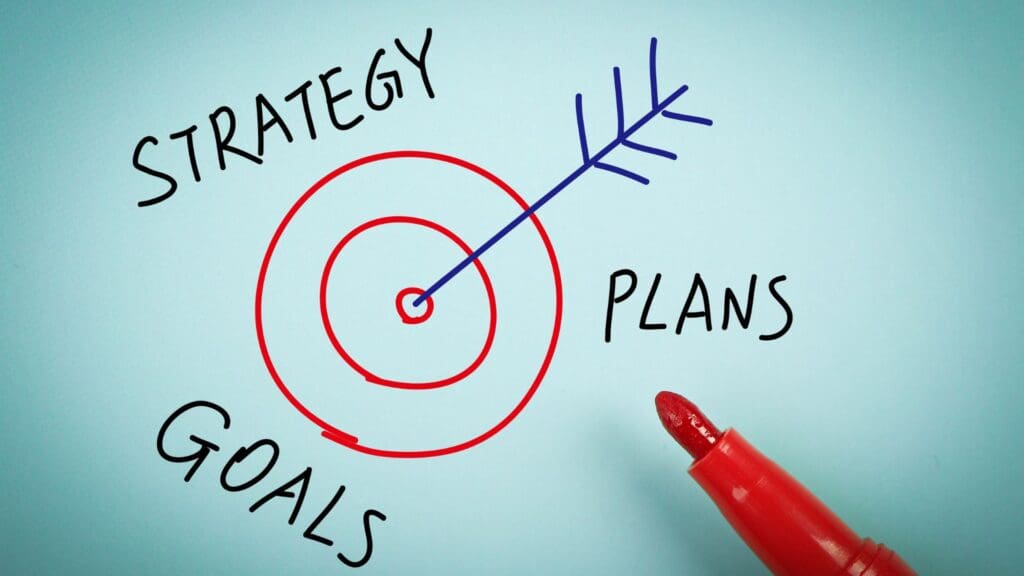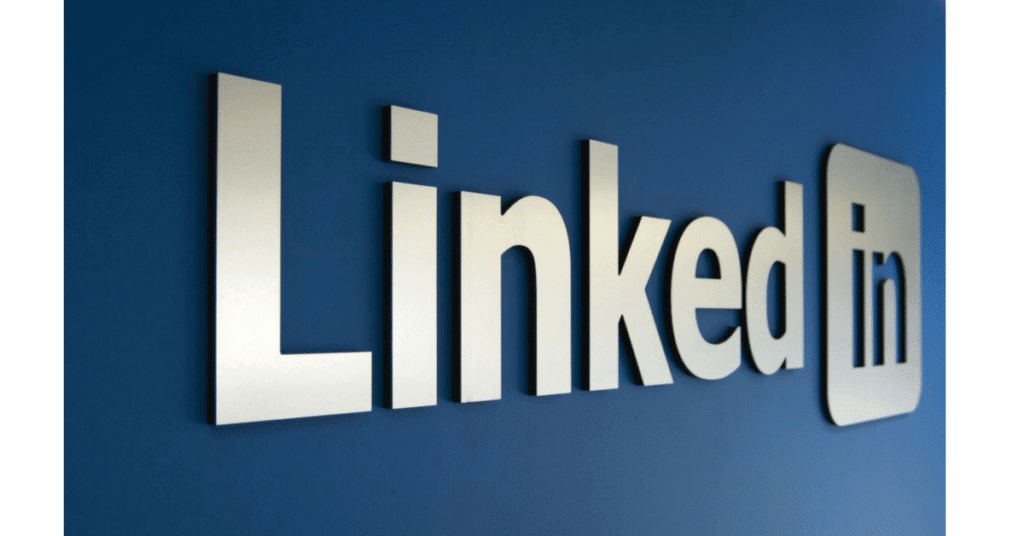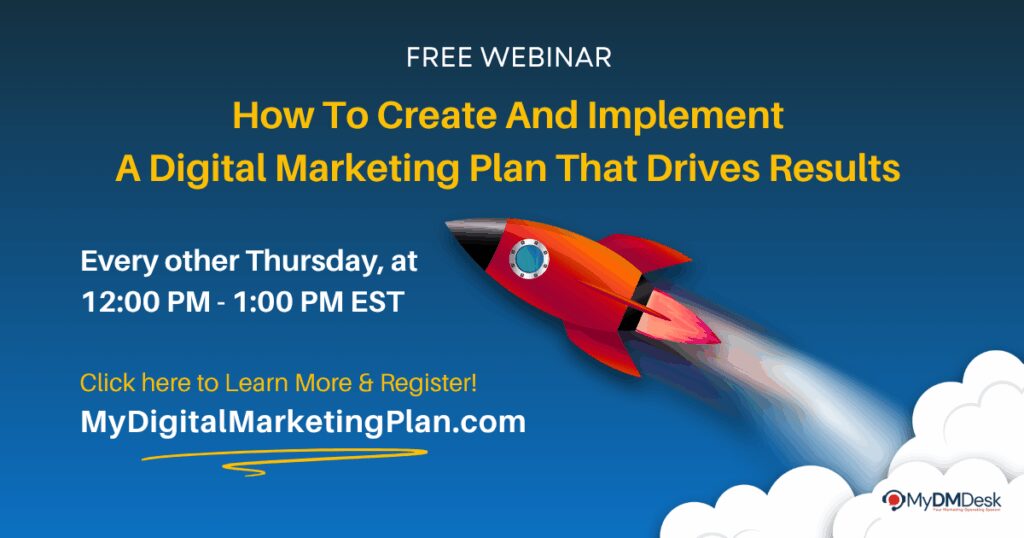Marketeering Blog
Lead Generation Strategies for Business

Attracting consumers to your business and turning them into paying customers is more than just sending out flowery emails and posting random social media messages. It’s all about lead generation: the process of finding potential customers and marketing your product or service to them. We’re going to explore in detail how to create lead generation strategies for your business.
What is Lead Generation?
Lead generation – or lead gen – is developing a prospect’s interest in your service or product and, through a series of marketing interactions, turning that interest into a purchase. This is done through the customer journey: beginning with prospective customers becoming aware of your service or product and how you market to them through each phase of the journey to convince them to make a purchase.
Although lead generation may have several touchpoints with your prospect during the customer journey, lead generation has three main phases: acquisition, nurturing, and conversion. We’re going to go through each one in depth in a bit.
First, lead acquisition is all about finding potential clients/customers who are likely to be interested in your product or service and turning them into qualified leads. This process includes activities such as search engine optimization (SEO), content marketing, and paid advertising. Through these initiatives, you can ensure that prospects find your product or service easily online and increase visibility for your brand.
Next up is lead nurturing. This phase is all about building relationships with potential customers and helping them get to know your product or service better. You can do this through email campaigns, webinars, and offers on social media channels, as well as by providing helpful content such as blog posts and articles.
Finally, lead conversion is the process of turning a prospect into a paying customer.
When it comes to lead generation, the key is to have an effective and innovative strategy to draw the attention of potential customers. These include creating engaging content, along with email and social media campaigns.
Lead generation helps business owners find new leads, build relationships with prospects, and nurture those leads until they become paying customers. It’s vital to understand the lead generation process for a success marketing campaign.
Related: Traditional Marketing or Digital Marketing, or Both
Why Do I Need to Use Lead Generation?
Lead generation is particularly crucial now that customers have access to endless information through podcasts, videos, and social media. Connecting with people early in the buying process is the goal of lead generation.
To achieve this, you need to earn their trust and build a meaningful relationship, so that your brand is on top of their mind when they’re ready to make a purchase.
Having a lead generation strategy provides other benefits, too. It helps to draw website visitors, build brand awareness, capture customer data, and foster brand loyalty.
Successful lead generation targets specific people and uses various platforms and strategies such as:
• Landing Pages – A dedicated landing page, equipped with tracking pixels, gathers site visitors’ information for future targeted sales.
• Email Marketing – Since recipients opt-in, you can reach your target customers in ways that fit your brand and build familiarity.
• Social Media – With unmatched opportunities for engagement, your social media accounts encourage your targets to take action authentically.
• Blogging – A blog post is a great lead generation tool to establish authority and provide value while providing information or promoting specific offers.
• Live Events – A great way to qualify leads and meet your target audience in person.
• Coupons and Other Promotions – Offering discounts or free items encourage prospects to provide their contact information.
The Customer Journey
Before we get into lead generation strategies, let’s review and help you understand the customer journey, also known as a marketing or sales funnel. Lead generation’s goal is to – wait for it – generate leads; getting high-quality leads into and through the funnel to become paying customers. The four stages of the customer journey are:
- Attention – This first part is when a prospect discovers your business and that it may help with their problem.
- Interest – The potential customer sees that your product or service is their solution.
- Desire – The potential customer is ready to pull the trigger to do business with you.
- Action – The potential customer is now a paying customer having made a purchase.
Understanding the customer journey through the sales pipeline will help you tailor your marketing strategy to better target your audience. You need to build a genuine relationship, with your ideal buyer, by applying a customized personal approach that guides them, in a nurturing way, through the journey of becoming your customer. This builds your brand’s reputation as a trusted authority in your industry and maximizes your marketing effort’s ROI.
Lead Generation Strategies
Let’s take a deep dive into the three main lead generation phases: acquisition, nurturing, and conversion, and how your business should be geared for each.
These phases can be looked at as the three stages of the marketing funnel: Top, middle, and bottom. Think of the funnel as an upside-down triangle; wide at the top and slimming down to a point at the bottom.
- Top (Acquisition) – This is where the potential lead has awareness or interest in your product or service.
- Middle (Nurture) – This stage is when you try to turn that interest into a desire to do business with you.
- Bottom (Conversion) – This is the stage where your marketing efforts have convinced the lead to purchase your product or service.
Related: Why Your Business Needs a Marketing Funnel
Acquisition
This first phase of lead generation is attracting a prospect to the beginning of the customer journey where it enters the marketing funnel and moves that lead through to the end.
Various strategies of the acquisition include:
1. Having a clearly defined target audience
Instead of marketing to the masses, targeting smaller, specific potential customers increases your likelihood of generating leads and turning them into conversions. This also allows you to tailor your marketing messages and efforts. Streamlining your customer persona will benefit all other lead generation strategies.
2. Identifying the most effective lead generation channels
You need to know where your potential customers are and what channels to use to reach them. These are the ultimate lead generation tools.
These include:
- SEO-optimized website – Having an SEO-optimized website will boost your rankings in search results to get on that first search results page. Your website should be fast-loading, easily navigated, and have a clean, attractive design.
- Engaging content – Blogs, podcasts, videos, and webinars give your business authority by providing knowledgeable and useful information.
- Email marketing – Email marketing allows you to promote your business through a series of emails with a more personalized approach by providing sales promotions or info about your services/products.
- Social media marketing – Connect directly with your audience through organic social media channels such as Linked In, Facebook, Instagram, and Twitter. Social media allows you to engage with potential customers. A Retail Touchpoints study found that 76% of customers buy products they see on social media.
- Influencer marketing – More and more consumers are turning to influencers for recommendations on businesses.
- Advertising – Advertising on Google and social media platforms including Pay-Per-Click (PPC) ads is a great way to get your message in front of your audience.
- Live Chat – Having a live chat on your website lets a potential customer interact directly with you.
Related: Should Your Business Be Using Sales Enablement?
3. Creating and Sharing Valuable Content
Blogs, e-books, courses, checklists, and videos are all examples of inbound marketing content you can create to provide potential customers with valuable information. Sharing it on your website, social media, or through email will generate leads.
Remember, quality content is key for effective lead generation. Keep your content relevant and make sure it’s regularly updated to not only engage and build relationships with current customers but also attract new ones.
4. Lead Magnet
Lead magnets are an effective way to convert leads into customers. They provide a valuable, often free offer that entices people to exchange their contact information for a desirable service or product. By capturing a potential lead’s contact info, you can market to them. Among the lead generation tools, this one is a must part of a lead generation campaign.
Examples of lead magnets include e-books, guides, webinars, discounts, checklists, subscriptions, contests, and giveaways. Lead magnet campaigns should be targeted to the right audience with the right message to ensure the highest conversion rate.
5. Landing Pages
A landing page is a standalone web page specifically designed to capture high quality leads. This is where a potential customer “lands” after clicking a link on an email, social media post, or ad.
The main purpose of a landing page is to get get a visitor’s contact details such as an email address by offering something of value through a lead magnet. With the person’s contact info in hand, you can then market to them through an email campaign.
A landing page should provide a concise, specific offer and have prominent call-to-actions (CTAs).
Landing pages should have user-friendly designs with no distractions or irrelevant information. Also, the CTA buttons should be visible and easy to find on a landing page. The more straightforward the landing page is, the more likely it will convert visitors into leads.
Related: Designing the Right Website For Your Business
6. Offers of Value
Another lead generation aspect to help attract prospects are offers of value to customers. These should be something that would benefit the potential customer such as a trial or discount.
This can be in the form of an initial free consultation, an online course, or anything else that provides your potential customer with useful, valuable information and entices them to make a purchase.
Offers of value also build trust between you and your prospects. People are more likely to purchase from a company they trust, and having an offer of value is the best way to achieve that.
Related: Inbound Marketing Strategies
Nurturing
Now that you’ve acquired leads, it’s time to nurture them. Nurturing your leads means educating and engaging them while building trust in your business until they are ready to make a purchase. This is done by providing helpful content, timely follow-ups, and staying in contact with potential buyers.
1. Segmenting Your Leads
Segmenting your leads is an important part of lead nurturing. It allows you to group potential customers based on their interests, behaviors, and demographics so that you can tailor your messages and content to them for better engagement.
For example, if a lead is interested in a particular product/service, you can customize the content they receive to be more closely related to that product/service.
2. Using automation
Automation software for following up will save you time and ensure your leads don’t slip through the cracks. You can use an email marketing platform or a customer relationship management (CRM) system to automate your outreach, so sales teams can focus on other aspects of lead generation. For better engagement, personalize your messages for each lead.
3. Prioritizing Leads
Lead scoring helps you prioritize leads based on their engagement and interactions with your business. It allows you to identify which leads are more likely to convert so you can focus your efforts on them.
Each lead is assigned points based on criteria such as site visits, engagement with emails, downloads of content pieces, geographic location, customer persona, etc. The higher the score a lead has, the closer they are to converting.
4. Nurture Leads
Creating a personalized lead nurturing strategy is essential for success. Start by identifying your target audience, create content tailored to their interests and needs, and utilize automation to help carry out your strategy. Also, use analytics to track progress and adjust accordingly as needed. By consistently engaging leads with valuable content, you will eventually turn them into paying customers.
5. Reengaging Leads
When leads don’t respond to your emails or content pieces, you can still reach out to them. Reengaging dormant leads is key for successful lead generation and is often overlooked. Set up a trigger-based automated email system that sends an email whenever a previously engaged contact has been inactive for some time. This will remind leads of your brand and allow them to re-engage. Additionally, create special incentives for returning customers such as discounts or free trials to entice them back into the sales funnel.
6. Personalize Emails
Personalization is key in lead generation. Customizing emails to individual leads will show that you understand their needs and create a more personal connection with them. You can use data from previous interactions, such as website visits or past purchases, to develop a personalized message. Additionally, use the customer’s name, include a relevant image, and focus on the benefits of your product or service.
With personalized emails, you’ll be able to cultivate relationships with leads and convert them into customers. For better engagement, personalize your messages for each lead. This will make the leads feel like they’re part of a conversation and not just being spammed with generic emails.
Related: Remarketing Your Potential and Existing Customers
Conversions
The final phase of lead generation is conversion – this is when a lead becomes a paying customer. To get here, you may need to do one more push to get that conversion.
1. Understanding a Lead’s Pain Points
When trying to convert a lead, it’s important to understand their pain points and provide a solution for them. What are the problems they’re facing that your product or service can solve? Are there any other services competing with yours? Identifying and understanding these factors will help you craft an effective conversion strategy.
2. Testimonials and Case Studies
People are more likely to purchase from a company they trust. To build that trust, it’s important to showcase the success of your product or service with testimonials from satisfied customers or case studies that provide examples of your product/service. This will show potential customers what they can expect if they were to use your product/service and will encourage them to make a purchase. You can also use social proof such as user reviews or ratings to further convince them.
3. Value Proposition
It’s important your website clearly explains the value that your product or service delivers. Don’t just talk about features but also discuss how those features can benefit the customer. Explain why they should invest in your offering and what kind of return they can expect from it. Point out a problem that your product/service seeks to solve, highlight how your company does it best, and explain the benefits your customers will reap. A strong value proposition will help persuade leads to make a purchase and complete the conversion process.
4. Scarcity Tactics
To create urgency and encourage leads to take action, you can use scarcity tactics as incentives. This could include limited-time offers or special discounts for a particular product/service. People are more likely to act quickly if they feel like they’re running out of time or missing out on an opportunity.
You can also add urgency to your messages – this could be in the form of asking leads to purchase now or providing a countdown timer. These tactics will give customers the motivation they need to take action and increase conversions.
5. Identifying Upsell Opportunities
Once you have a customer, it’s important to identify upsell opportunities. An upsell is when you offer a higher-priced version of the product or service they already purchased. This can be done through targeted emails offering upgrades or bundles that include additional features at a discount. This is an easy way to generate more revenue from existing customers and maximize your profits.
To increase the chances of success, use the customer data you collected to tailor your upsell offers. By understanding their needs and providing relevant solutions, you can boost customer loyalty and create long-term relationships with them.
6. Using Different Messaging and Approaches
Lead generation is all about creating relationships with your customers and developing content that resonates with them.
To do this, you need to use different messaging and approaches for each segment of your audience. Use A/B testing to determine the best version of your message, then adjust based on the results.
Additionally, try out new methods such as interactive content or videos to stand out from the competition and better engage your leads. Also, ensure you are consistent with your messaging across all channels – this way, customers will recognize your brand no matter where they interact with it. With different approaches to lead generation, you can easily reach more customers and boost conversions.
Knowing these lead generation phases will help you plan out your lead generation strategy.
You Need a Marketing Plan
To effectively capture leads and convert them into customers, you need to create a well-thought-out lead generation plan as part of your overall marketing plan. Going all willy-nilly with random acts of marketing will get you nowhere.
It’s essential to have a strong plan in place that outlines your objectives, strategies, tactics, and timeline. A comprehensive marketing plan will help you identify your target market, create content that resonates with them, and develop effective lead generation strategies.
All of this needs to be well documented to be effective. Without a clear roadmap, it’s impossible to measure the success of lead gen marketing campaigns and activities. Documenting your plan will help you keep track of progress, make adjustments and optimize performance along the way.
Related: How to Create a Powerful Shock and Awe Marketing Campaign
Marketing Budget
And of course, you need a budget to fund that plan. It gives you an understanding of how much money you have to spend and helps you decide which activities will yield the most effective lead-generation results. This allows you to track your ROI and adjust the budget accordingly to get the most out of your campaign.
Without a solid budget, you won’t have enough capital to execute your strategies. It gives you an understanding of how much money you have to spend and helps you decide which activities will yield the most effective lead generation strategy results to get more leads.
By having a dedicated marketing plan budget, you can make sure your lead generation strategy efforts are properly funded and bring in more sales for your business. It’s all about converting potential leads into new customers.
Tracking Your Marketing Efforts
When it comes to marketing, what gets measured gets improved. That’s why tracking and measuring your marketing plan is so important. Taking the time to analyze your efforts can help you make adjustments and refine your lead gen strategies for greater success.
But how do you track the progress of a marketing plan? First, define some specific goals and metrics you’d like to track. Are you looking for more website visitors? Trying to increase lead generation? Pick a handful of achievable goals and use them as benchmarks for your marketing plan.
Next, decide on a system to measure these goals. Will you use web analytics or email tracking software? What data points will be most helpful in understanding the progress of your efforts? Answering these questions will help you determine what type of tools and tracking systems are best for your goals.
Finally, make sure to track your progress regularly. Take the time to go through the data and analyze it carefully. Make adjustments and refine your strategies based on what you learn from the tracking results.
B2B Lead Generation
B2B (Business-to-Business) differs from B2C (Business-to-Consumer) since B2B is a business selling to another business. B2c sells directly to individuals.
Lead generation strategies for B2B would involve SEO, social media, a sales call, and email marketing for generating sales qualified leads.
B2B employs inbound lead generation where content marketing comes into play. These lead generation efforts would be blog posts, ebooks, and video content that provide engaging value to potential leads and draw new leads. This content also positions your business to become an authority in your industry.
In addition to email and social media lead generation methods, B2C on the other hand would utilize traditional advertising as part of their lead generation campaigns. Although B2C goes after a more diverse audience than B2B, lead gen marketing messages need to be more on a personal level to address pain points.
Employing lead generation best practices will help your business generate business leads.
Leave it to the Experts
Lead generation is a key factor in increasing your business’ ROI. Metro Annex Interactive has the experience to develop the best lead generation strategies so you can get not only more leads but highly qualified leads.
We can help you create an effective digital marketing strategy using data-driven metrics by helping to identify target audiences, set up channels, determine what content works best for each customer journey stage, and create campaigns that convert so your business can start generating leads.
We can create your lead generation strategies so you can get new leads. Let us take care of it all so you can focus on what matters; growing your business.
Some information for this article was used from Hubspot, OceanWP, and leadfeeder.
Article Resources
FAQ’s
What is lead generation, and why is it vital for businesses?
Lead generation is the process of attracting and converting strangers and prospects into someone who has indicated an interest in your company’s product or service. It is vital for businesses because it fills the sales pipeline with potential customers, ultimately driving revenue.
What are some effective lead generation strategies for businesses?
Effective lead generation strategies include content marketing, search engine optimization (SEO), pay-per-click (PPC) advertising, social media marketing, email marketing, hosting webinars, and leveraging landing pages with strong calls-to-action (CTAs).
How does content marketing contribute to lead generation?
Content marketing contributes to lead generation by providing valuable and relevant content to your target audience, which builds trust and authority. This helps attract potential leads and encourages them to provide their contact information in exchange for more insights or resources.
Can social media be used for lead generation, and if so, how?
Yes, social media can be used for lead generation by engaging with the audience through compelling content, running targeted advertising campaigns, hosting live events, and prompting users to sign up for offers or download resources directly through social media platforms.
How do you measure the success of lead generation efforts?
The success of lead generation efforts is typically measured by metrics such as the number of leads generated, conversion rate (the percentage of leads that become customers), cost per lead, and return on investment (ROI) for various lead generation channels and campaigns
Hashtags
Author

Mathew Phillips | Digital Marketing Specialist
Mathew Phillips is an expert in digital marketing and lead generation services. Mathew has a passion for all things digital marketing from website design and search engine optimization to digital advertising, email marketing and social media.










